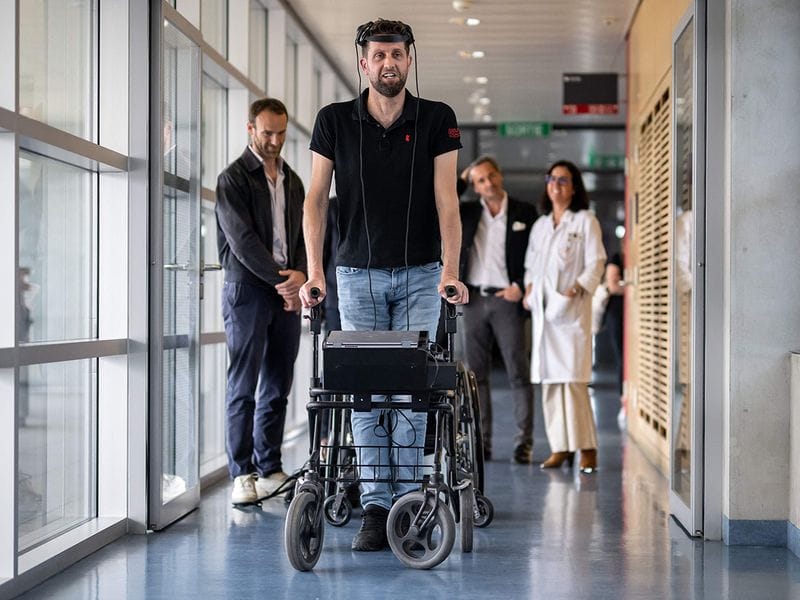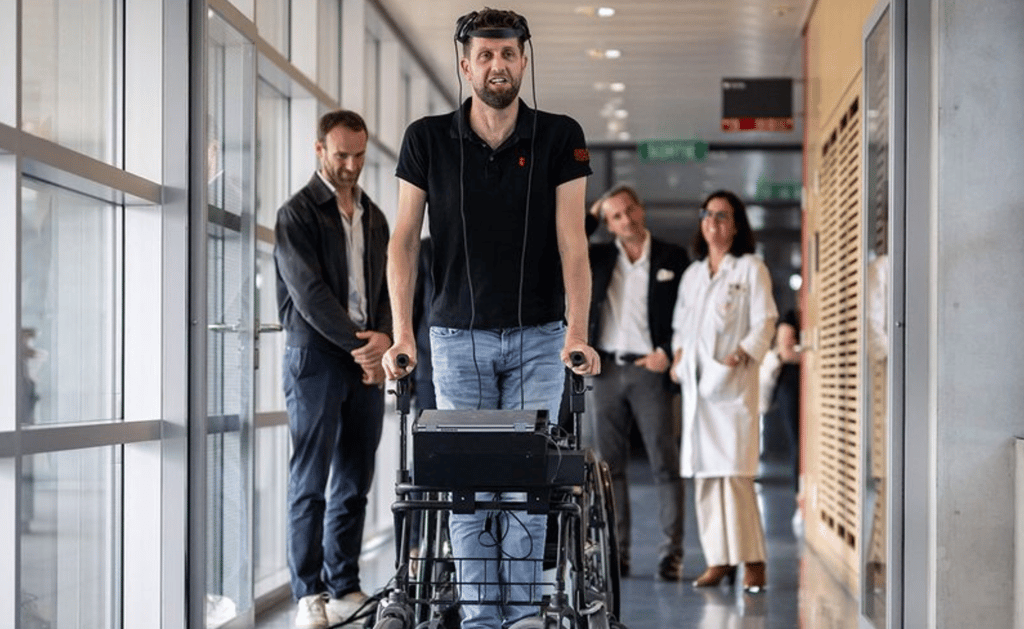
In 2011, while Gert-Jan Oskam was residing in China, a bike accident left him paralyzed from the hips down. Scientists have used a number of tools to restore control of his lower body with the help of brain and spine implants.
“For 12 years I’ve been trying to get back on my feet. Now I have learned how to walk normal, natural,” Oskam said in a press briefing on Tuesday, as reported by the New York Times.
In a study that was published on Wednesday in the journal Nature, Swiss researchers showed off implants that permitted a “digital bridge” between Oskam’s brain and spinal cord while avoiding damaged areas. The breakthrough allowed Oskam, 40, to stand, walk, and use a walker to climb a steep incline. More than a year after the implant was placed, he still had these skills, and even after the device was turned off, he displayed signs of neurological recovery by using crutches to walk.
“It was quite a science fiction in the beginning for me, but it became true today”
“We’ve captured the thoughts of Gert-Jan, and translated these thoughts into a stimulation of the spinal cord to re-establish voluntary movement,” Grégoire Courtine, a spinal cord specialist at the Swiss Federal Institute of Technology, Lausanne, who helped lead the research, said at the press briefing.
“It was quite science fiction in the beginning for me, but it became true today,” said Jocelyne Bloch, a neuroscientist at the University of Lausanne who placed the implant in Oskam.
An algorithm was used to connect the spinal implant to the brain implant
In a study that was published on Wednesday in the journal Nature, Swiss researchers showed off implants that permitted a “digital bridge” between Oskam’s brain and spinal cord while avoiding damaged areas. The breakthrough allowed Oskam, 40, to stand, walk, and use a walker to climb a steep incline. More than a year after the implant was placed, he still had these skills, and even after the device was turned off, he displayed signs of neurological recovery by using crutches to walk.
To achieve this result, the researchers first surgically placed electrodes in Oskam’s skull and spine. The researchers then observed which parts of his brain lit up when he attempted to move specific body parts using a machine-learning algorithm. This thinking decoder was able to link a particular electrode’s activity to a particular set of objectives.
Another algorithm was then used to connect the spinal implant to the brain implant, which was configured to send electrical signals to different parts of his body and cause movement.
